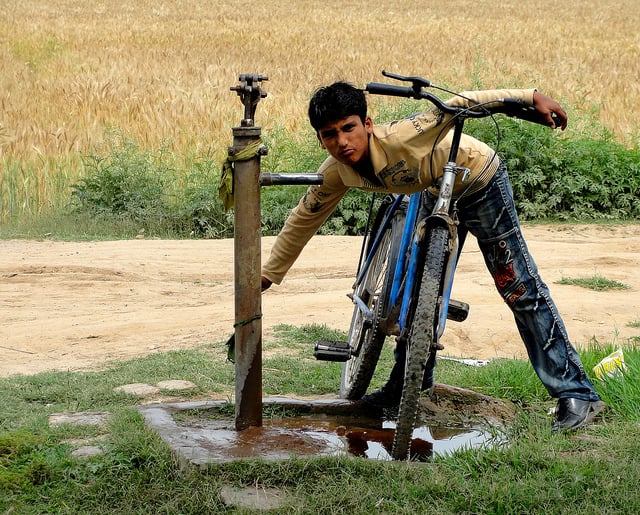Pakistan, a once abundant water country, is now on the verge of being categorised water scarce, says a recent report by the International Monetary Fund (IMF).
Things have changed dramatically in the past two decades: the total water availability per person has plunged from 3,385 cubic metres in 1977 to 1,396 cubic metres in 2011, according to FAO’s Aquastat database.
Four years on, it is estimated to be around 1,000 cubic metres, below which Pakistan would be considered a water scarce country.
These projections mainly consider surface water availability, which is decreasing at an alarming rate. However, the situation at the groundwater front is even more worrying.
Why groundwater is so important
Groundwater is considered a buffer, which in conditions of surface water shortages or droughts provides a backup against food insecurity and environmental threats.
Climate change once considered a buzzword is something that is going to affect South Asian countries the most in the near future. We have already begun to see erratic climatic patterns whereby intense weather events have become routine. The only way we can cope up with uncertain water supplies is to have resilient and sustained groundwater aquifers.
The impact of climate variability on groundwater is slower as compared to surface water systems. It is estimated that almost 30% of the world’s fresh water resource comes from groundwater. In Pakistan, the share of groundwater in irrigation is 50% which means we are already supplementing our surface water supplies with an equal amount of groundwater. This is expected to further increase with uncertainties in surface water supplies.
Groundwater is a transboundary issue. According to a recent report published by the Stimson Center, nearly half the world is situated in one of 276 transboundary river basins which bear 40% of the world’s population. These 276 international rivers generate 60% of global freshwater.
Groundwater running dry
The transboundary Indus basin is shared between India and Pakistan. A report published by the Gravity Recovery and Climate Experiment (GRACE) satellite mission of NASA has revealed the Indus Basin aquifer of northwestern India and Pakistan as the second-most overstressed aquifer in the world. India ranks number one and Pakistan fourth in the list of top 10 countries in terms of water withdrawals. Pakistan, however, tops the list of countries for water intensity rate (the amount of water, in cubic metres, used per unit of GDP).
The Indus basin aquifer covers parts of the Indian states of Haryana, Himachal Pradesh, Jammu and Kashmir, Punjab and Rajasthan either wholly or partly; in Pakistan, all four provinces fall wholly or partly in the Indus basin. Groundwater in the Indian Punjab and Haryana flows in a western and south-western direction towards Pakistan. Groundwater has to be managed at the basin level whereby withdrawals on the Indian side may have impact on the groundwater tables on the Pakistani side.
India, Pakistan cooperation
Unfortunately, the Indus Water Treaty of 1960 regulates the waters of western and eastern rivers with no direct relation to groundwater. While this may seem all too gloomy, it also brings an opportunity in itself. There is a possibility of transboundary cooperation in safeguarding the Indus basin aquifer.
As the Stimson Center’s report highlights, groundwater management requires a higher degree of user involvement than surface water development. Top-down control-and-command measures will not work, and actions should be initiated from and with public participation.
The states of Rajasthan, Punjab and Haryana on the Indian side and Punjab on the Pakistan side need to raise awareness at the grassroots level about the economic and ecological benefits of having a resilient groundwater aquifer which could potentially act as a buffer during droughts. The governments need to come up with institutional mechanisms to regulate un-sustained groundwater abstractions across the border and initiate exchange of data on groundwater depths, quality etc. in order to preserve this precious resource.
I am still optimistic that Pakistan can avoid being declared a water scarce country by better management of existing water resources (surface water and groundwater). This can be achieved through change in cropping patterns, use of water saving technologies, use of scientific data on surface and groundwater flows and institutionalised mechanisms to regulate withdrawals.
Disclaimer: The opinions and views expressed in this article are exclusively those of the author.
The author is a water management professional and a researcher with the International Water Management Institute
